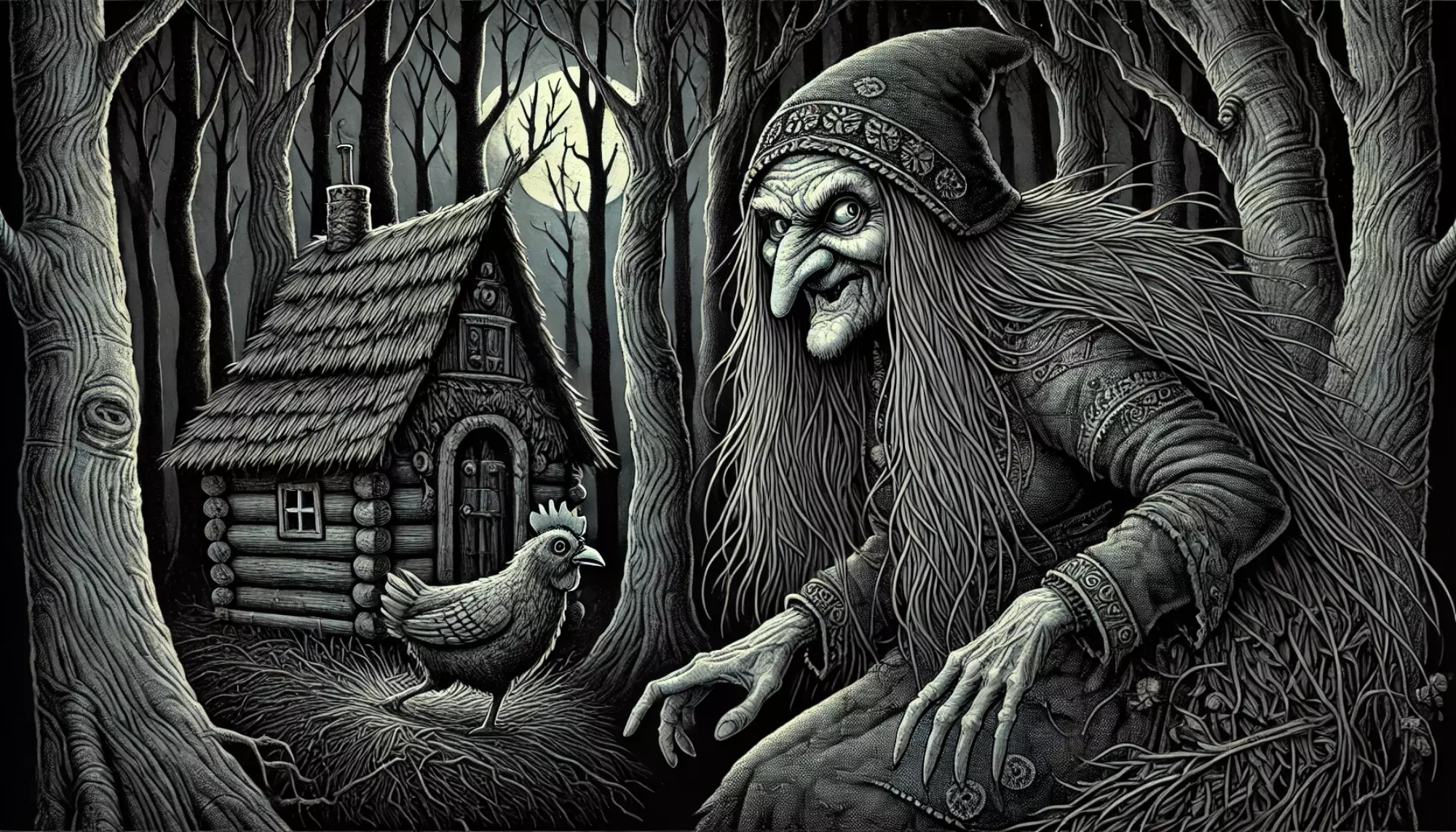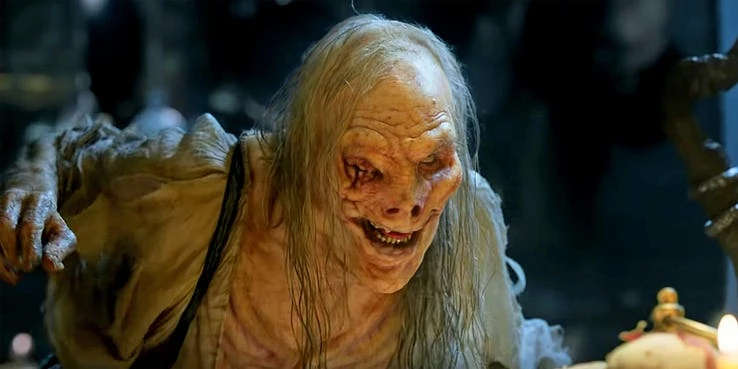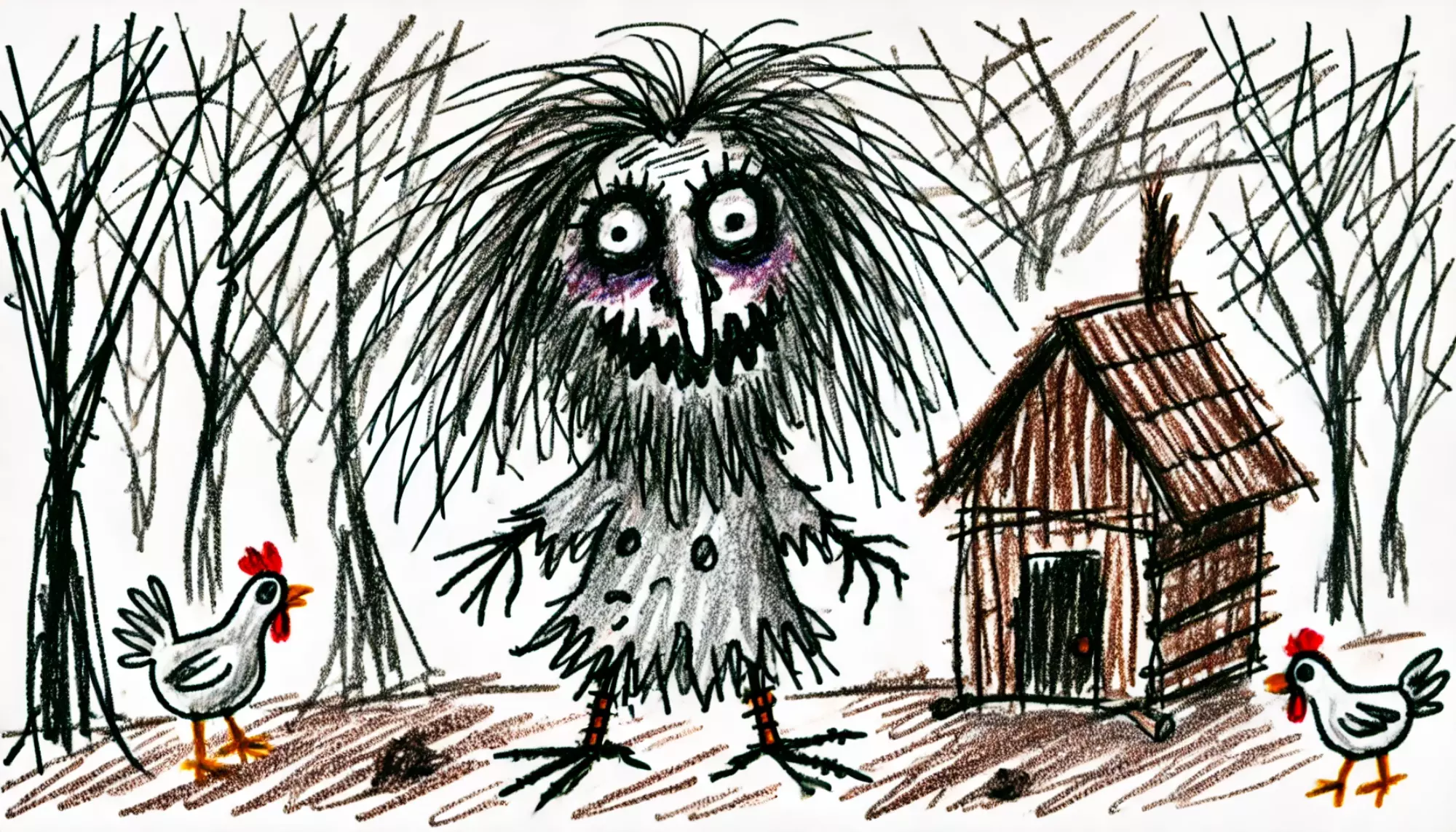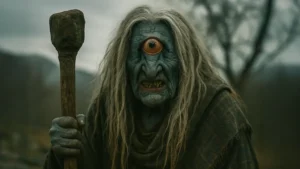Baba Yaga: The Enigmatic Witch of Slavic Folklore
Baba Yaga is the terrifying yet fascinating witch of Eastern European folklore, a figure who embodies both wisdom and dread. She lives in the deep forests of Russia and other Slavic lands, often appearing as an ancient crone with a crooked smile, ready to test the bravery and cunning of those who dare cross her path.
Known for her house on giant chicken legs and her ability to fly in a mortar while sweeping away her traces with a broom, Baba Yaga is both a protector of ancient wisdom and a force of malevolence. Her stories continue to captivate and unsettle, offering lessons on courage, intelligence, and the often-dark mysteries of the natural world.
History/Origin
Baba Yaga stands as one of the most iconic figures in Slavic folklore. This legendary witch first appeared in Russian and Eastern European tales centuries ago, where she is often depicted as a hag who lives deep in the woods, embodying both the feared and revered aspects of a powerful, unpredictable spirit.

While her origins are elusive, she is thought to have stemmed from ancient pagan practices and beliefs in nature spirits. As Slavic folklore evolved, she became synonymous with the forest’s mystical and often malevolent forces.
Known for her association with death, wisdom, and transformation, Baba Yaga’s stories have captivated generations, linking her to the natural cycle of life and the mysteries of the human psyche.
Name Meaning
In Russian and other Slavic languages, “Baba” typically means “old woman” or “grandmother,” while “Yaga” is more ambiguous. Some linguists trace “Yaga” to proto-Slavic roots that relate to illness, fear, or wrath.
Together, the name evokes an image of a wise, elderly woman with a potentially dark and threatening nature. In tales, Baba Yaga embodies a duality; she is both a grandmotherly figure who may help lost wanderers and a terrifying witch who eats children.
This name encapsulates the respect and fear she instills in those who hear her stories.
Background Story
Stories of Baba Yaga vary widely across regions, but they share certain core elements. She is said to live in a hut that stands on two enormous chicken legs, a house that can spin or even walk through the forest at her command.
Her home is surrounded by a fence made of human bones, with skulls lighting her path.
“The forest was her domain, and none could enter without offering.” (Traditional Slavic Saying)
Baba Yaga herself is usually described as a gaunt, elderly woman with iron teeth, flying through the sky in a giant mortar, steering with a pestle. She doesn’t simply ride through the sky; she erases her tracks with a broom made from birch branches, making it impossible to follow her.
In many stories, she is a guardian of wisdom, but her gifts often come with a deadly challenge. Baba Yaga represents life’s complexity, she can be both a savior and a destroyer, depending on the seeker’s intent.

Cultural Impact
Baba Yaga is a cornerstone of Eastern European folklore, influencing art, literature, and film throughout the region and beyond. In Russia, she appears in fairy tales like “Vasilisa the Beautiful” and “The Frog Tsarevna,” where she often sets tasks that test the protagonist’s wit and bravery.
“Beware the house that spins and walks; Baba Yaga sees all within her forest.” (Russian Proverb)
The tales of Baba Yaga spread across Slavic nations, with each region adapting her to their culture’s values and fears. She has become an embodiment of the wild, untamable power of nature, symbolizing both the knowledge that comes from experience and the dangers lurking in unexplored realms.
Modern depictions sometimes portray her as a misunderstood figure, a wise crone rather than a villain.
Similar Beasts
Here’s a full Similar Beasts chapter for Baba Yaga, with 5 sub-chapters, each highlighting a mythological figure that parallels or contrasts her as a supernatural, liminal being:
Similar Beasts
Baba Yaga is unique in Slavic folklore, but her role as a witch, crone, or ambiguous guardian has echoes across global mythology. These similar beings share traits of magic, transformation, or ties to nature’s mysteries.
Hecate (Greek Mythology)
Hecate, the Greek goddess of witchcraft, crossroads, and the underworld, mirrors Baba Yaga’s liminal role. Both guide or hinder heroes depending on circumstance, embodying mystery and the shifting balance between life, death, and fate.
The Cailleach (Celtic Folklore)
The Cailleach is a divine hag in Scottish and Irish tradition. Like Baba Yaga, she rules over winter, storms, and the harshness of nature.
Both appear as ancient crones with immense power tied to the cycles of the earth.
Frau Holle (German Folklore)
Frau Holle is a supernatural old woman from Germanic tales. She rewards the diligent and punishes the lazy, much like Baba Yaga tests mortals.
Her dwelling between worlds echoes Baba Yaga’s hut in the forest as a threshold place.
Cailleach Bheur (Celtic Folklore)
Cailleach Bheur, the Celtic hag of winter, mirrors Baba Yaga as an ancient crone bound to nature’s harsher cycles. Feared for bringing storms, snow, and death, yet respected as a force of renewal, she embodies the same ambivalent power of destruction and transformation that defines Baba Yaga.

Kikimora (Slavic Folklore)
Kikimora is another Slavic spirit, often depicted as a household witch. Unlike Baba Yaga, she is tied to domestic spaces rather than the deep forest, but both figures appear as eerie female spirits who can bless or curse.
La Llorona (Latin American Folklore)
La Llorona, the “Weeping Woman,” wanders waterways lamenting her lost children. Like Baba Yaga, she is both feared and pitied, embodying sorrow and punishment.
Both cautionary figures warn of human weakness and the dangers of the supernatural.
Religion/Ritual
Baba Yaga holds a unique place in Slavic folk religion. In ancient times, she was likely seen as a forest spirit rather than a true deity, but her presence invoked fear and respect.
People often left offerings at forest shrines or performed small rituals to ensure safe passage through her domain.

Some scholars argue that Baba Yaga is a remnant of pre-Christian Slavic beliefs, where powerful women and spirits mediated between the natural and supernatural worlds. Even today, she is sometimes included in neo-pagan practices, where followers of Slavic traditions honor her as a symbol of wisdom and transformation.
Scientific or Rational Explanations
Baba Yaga’s legend may stem from a combination of cultural symbolism and natural events. Her house on chicken legs could represent traditional stilted huts found in regions prone to flooding, while her association with wild forests echoes the ancient fears of what dangers might lurk in untamed nature.
“She flies through the night, her path swept clean, and her laugh echoes between the trees.” (Traditional Slavic Folk Tale)
The image of an old, solitary woman living in the woods aligns with historical figures who lived on society’s margins, using herbal knowledge and simple tricks to survive. This combination of isolation, wisdom, and wilderness may have evolved into the figure of a powerful witch, reflecting both respect and wariness toward those who lived close to nature.
Modern Cultural References
Baba Yaga has permeated modern media and is often reimagined in various forms of entertainment. Some notable appearances include:
- John Wick series – In these films, the protagonist is nicknamed “Baba Yaga” as a reference to his unstoppable, feared nature.
- Hellboy – In this comic and film series, Baba Yaga is portrayed as a powerful witch with significant influence over the supernatural.

- The Witcher series – Baba Yaga’s influence is seen in various witch characters who wield knowledge and danger in equal measure.
- Pathfinder and Dungeons & Dragons – Both role-playing games feature Baba Yaga as an iconic, mythic figure with quests surrounding her.
- Neil Gaiman’s The Sandman – Baba Yaga appears as a mysterious, eerie force reflecting her traditional folkloric role.
- Once Upon a Time – This popular TV series includes her as a character who represents ancient magic and wild wisdom.
- Baba Yaga: Terror of the Dark Forest – This horror film draws on her legend, showing her as a threatening figure who preys upon children.
- Video Game: Rise of the Tomb Raider – The game includes a mission called “Baba Yaga,” where players encounter a supernatural force inspired by her.
- Witcher Video Game Series – Features several hag-like characters inspired by Baba Yaga’s themes of wisdom, danger, and the mystical forest.
- The Books of Magic by Neil Gaiman – Baba Yaga appears as part of a lineup of mythical and magical creatures, cementing her place in fantasy lore.

Conclusion
Baba Yaga embodies the magic, mystery, and paradoxes of Slavic folklore. As both a fearsome and wise figure, she transcends the traditional roles of villains or allies.
Baba Yaga shows that the natural world, especially the untamed wilderness, can offer both wisdom and peril. Her legacy as the “witch of the forest” reminds us of humanity’s age-old relationship with nature, a mix of respect, fear, and wonder.
Baba Yaga remains relevant in modern culture because she speaks to the universal fear of the unknown and the hidden wisdom it often holds. In her stories, we glimpse an enduring lesson: wisdom, like magic, often comes with a price.









